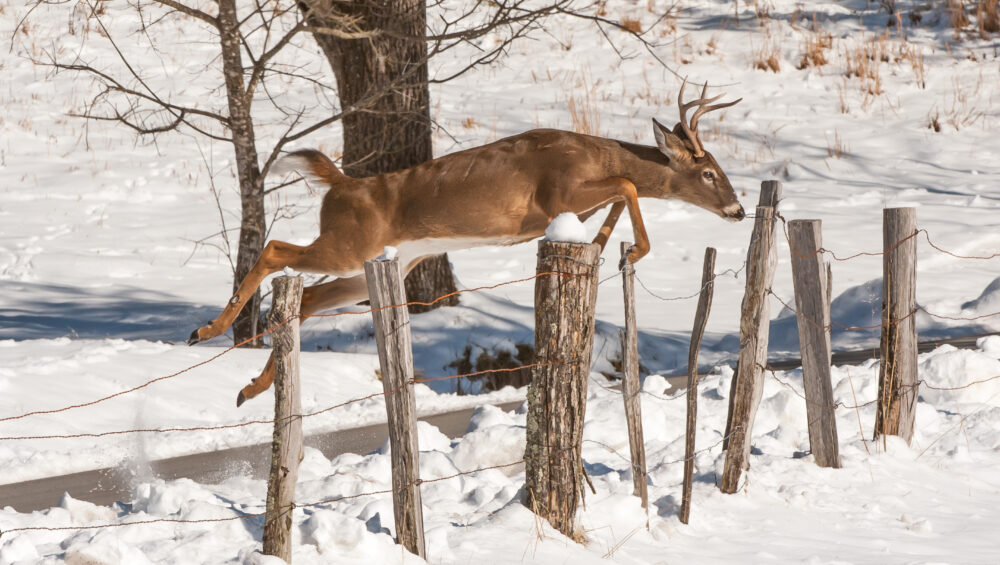Photography in the Spring and Summer offers amazing opportunities for subjects such as wildlife rearing their young, lush green landscapes, wildflowers, and full rivers and streams. But don’t put your camera away in the Winter. The frosty air and barren landscape may not seem like a photographer’s paradise, but you may be pleasantly surprised. So put on your coat and gloves, and let’s look at some Winter Photography Tips.
There are many benefits to getting outside in the winter to do some photography. In areas, such as the Smoky Mountains, that are heavily visited the rest of the year, the winter can provide some amazing solitude. Wildlife may not be located as easily, but what is available will be less pressured by visitors. The underlying structure of trees and other plants slumbering for the winter provide endless opportunities for artistic photography. Plus, when you have snow or ice the entire landscape is transformed into a wonderland. So here are a few tips to improve your photography in the winter.
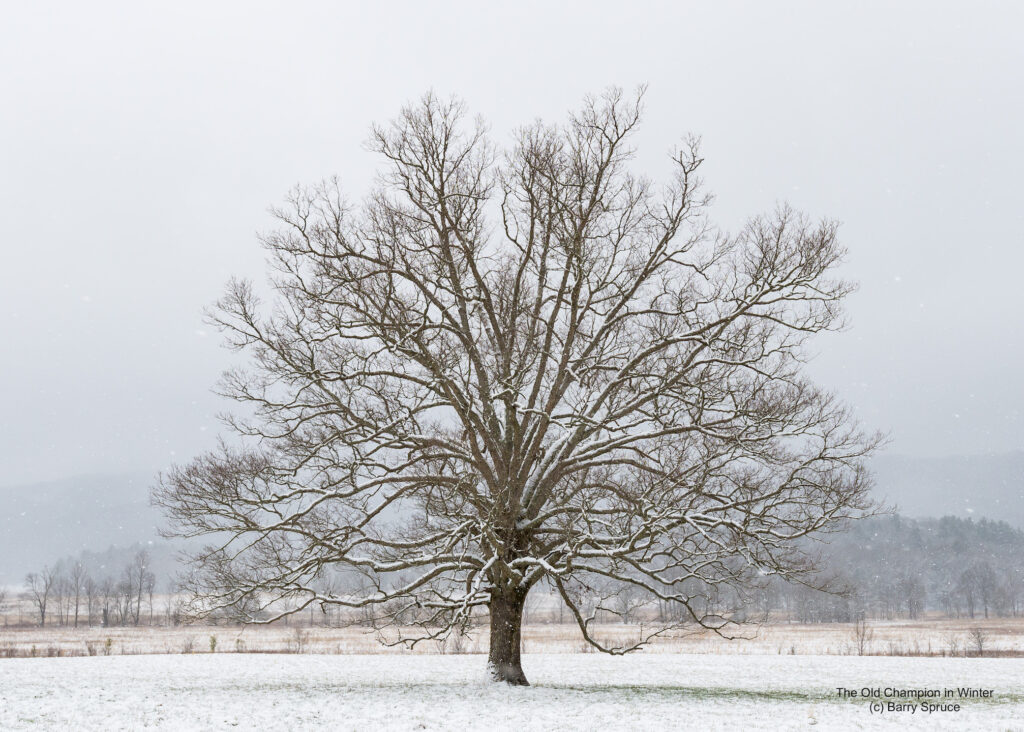
1. Be Prepared
First, be sure to be prepared for the unpredictable weather of winter. If you are not familiar with an area, research the weather carefully and prepare for any outdoor adventure with proper winter clothing and gear. Utilize a guide who is trained and skilled in outdoor winter photography and activities as needed. Second, consider how your gear will react in the cold. Batteries will drain quicker in the cold, so have extra batteries. You need to acclimate your gear to the cold before shooting. You can place it in the vehicle 30 minutes or an hour before shooting to minimize fogging. Keep the temperature in the vehicle low while driving to also reduce fogging of the camera lens when exiting the vehicle to shoot. Since you are already dressed warmly, you should be comfortable with the lower temperature in your vehicle.
2. Winter Lighting
Lighting in the winter can be challenging. Low light during winter storms, however, can provide unique monochromatic effects. This barn has a black and white feel that enhances the bright painting on the side. It resembles selective coloring that advertisers often use. The lighthouse image is also a style of selective coloring that has a dramatic effect because it has the feel of a winter monochromatic image until you see the pops of color from the flag and light. The image was taken in a heavy winter storm with very low light. So look for interesting contrasts, patterns, and textures plus pops of color even when the winter sky looks dreary. Plus, don’t forget winter sunsets. I captured a rare alpenglow in Cades Cove on a wintery evening. It only lasted a few moments, so being there and being prepared for the unexpected allowed me to capture the unforgettable moment.
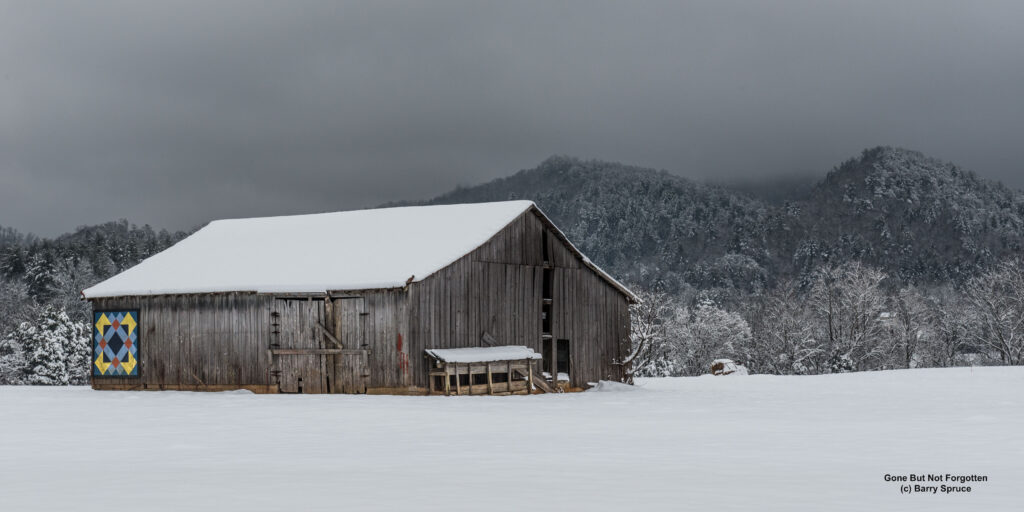
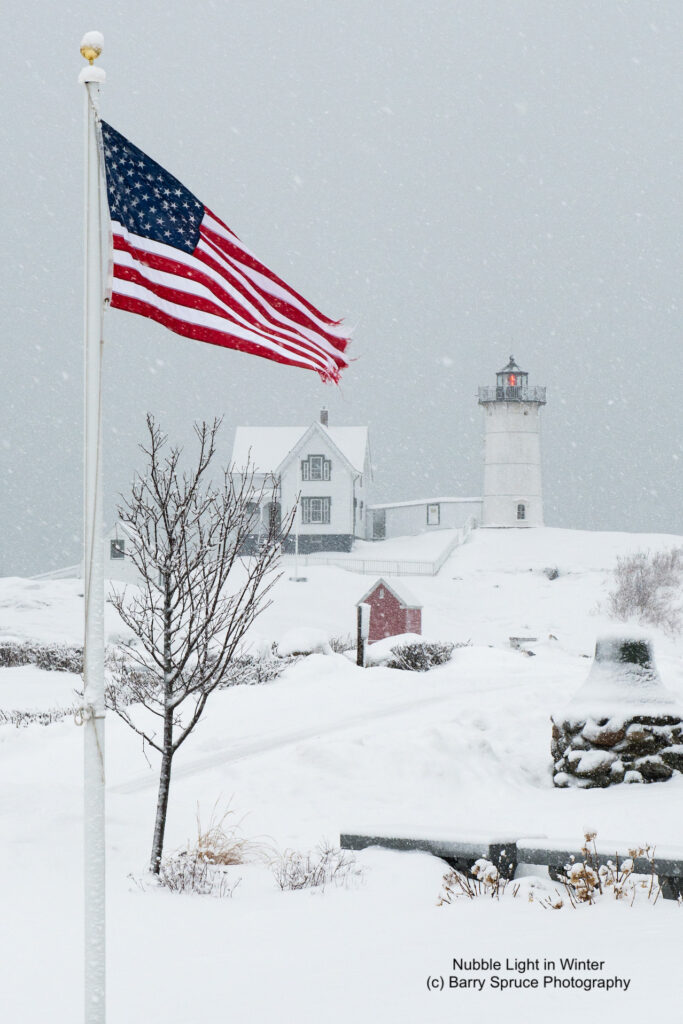
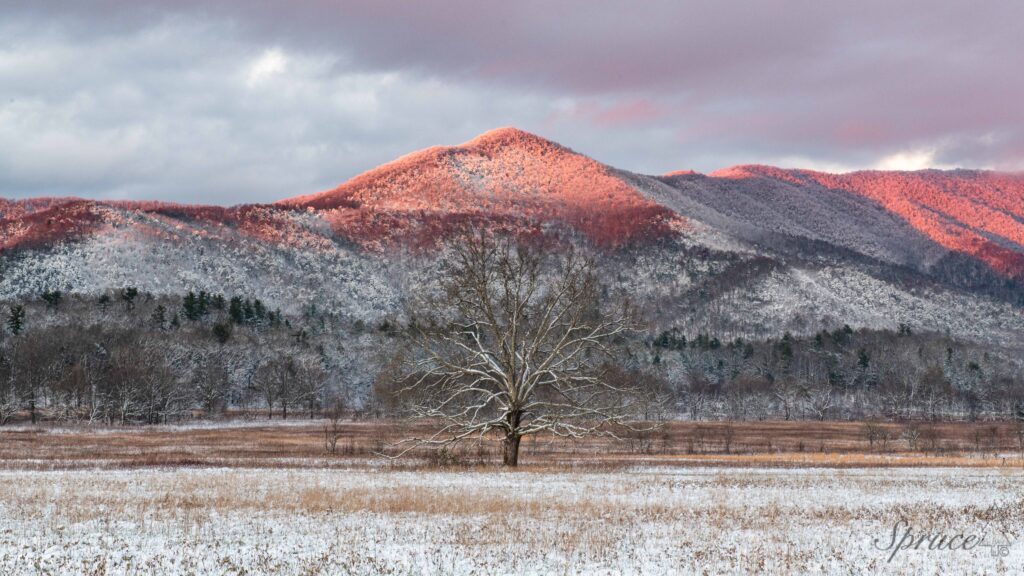
3. Winter Wildlife
Winter photography offers opportunities to get great wildlife shots. Birds with sparkling ice crystals, deer with frost on their backs, and coyote hunting in snowy fields are just a few possibilities. Early morning is the perfect time to get animals such as deer with frosty fur when they first get up from bedding down overnight. Animals and birds are hungry just like we are after a night’s sleep, so they will be actively feeding in the morning. Also, look for shots of birds and other animals with frosty breath. When it is actively snowing, use manual focus when photographing wildlife. Otherwise, the camera will focus on the snow flakes instead of your intended subject.
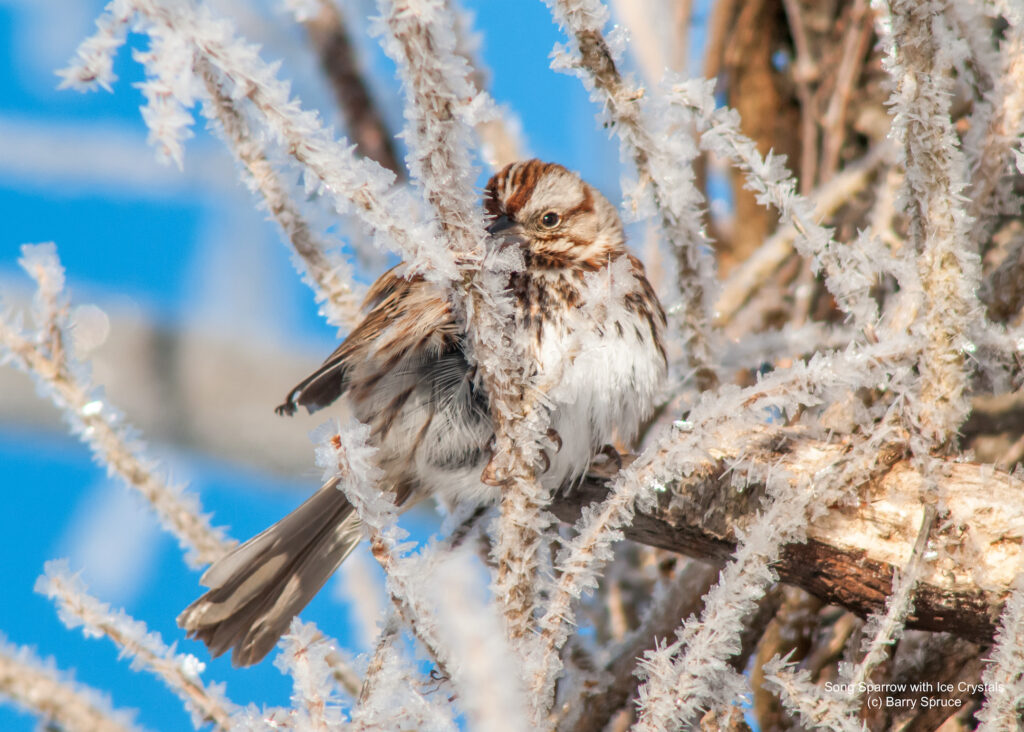
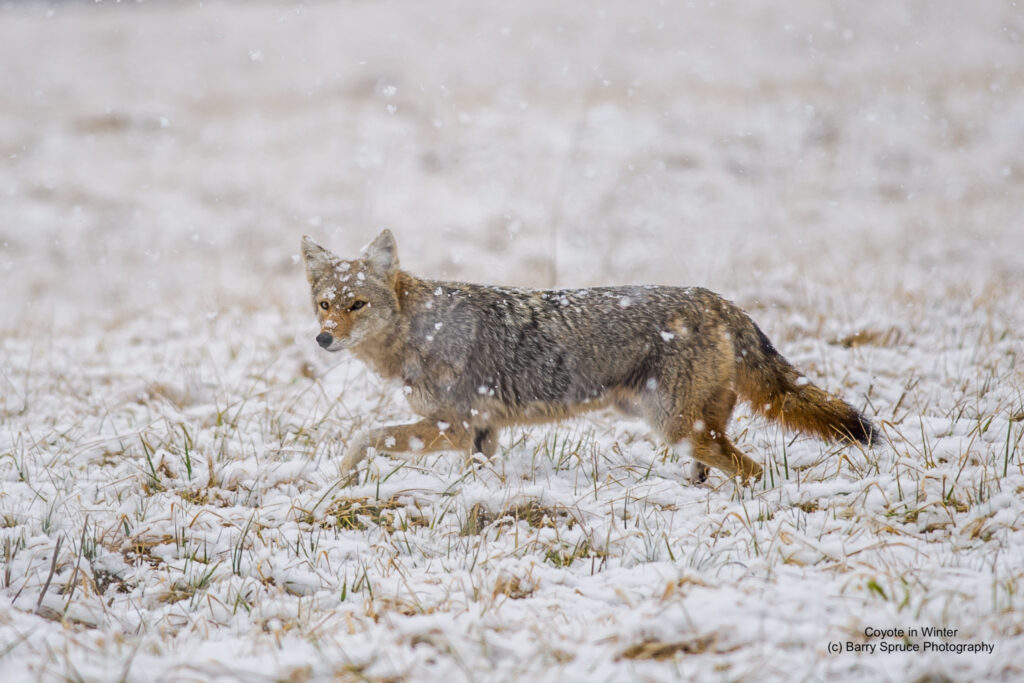
4. Winter Landscapes
Even if the ground isn’t covered with snow, winter offers unique landscape opportunities. When conditions are right, a hoar frost will form on grass and trees. These white ice crystals create a jewel covered landscape. Look for shots where the hoar frost covered grasses contrast with the surrounding landscape. Do close-up photography of the ice crystals on different surfaces. And capture the crystal covered trees highlighted by the sun. Also, look for unique patterns and textures created by trees, snow blown onto structures, and ice. Dramatic textures and skies can create amazing black and white landscape images.
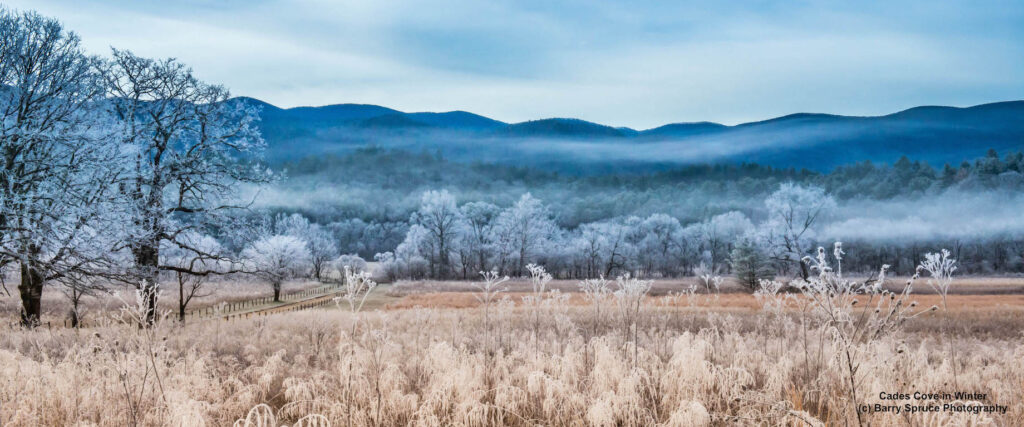
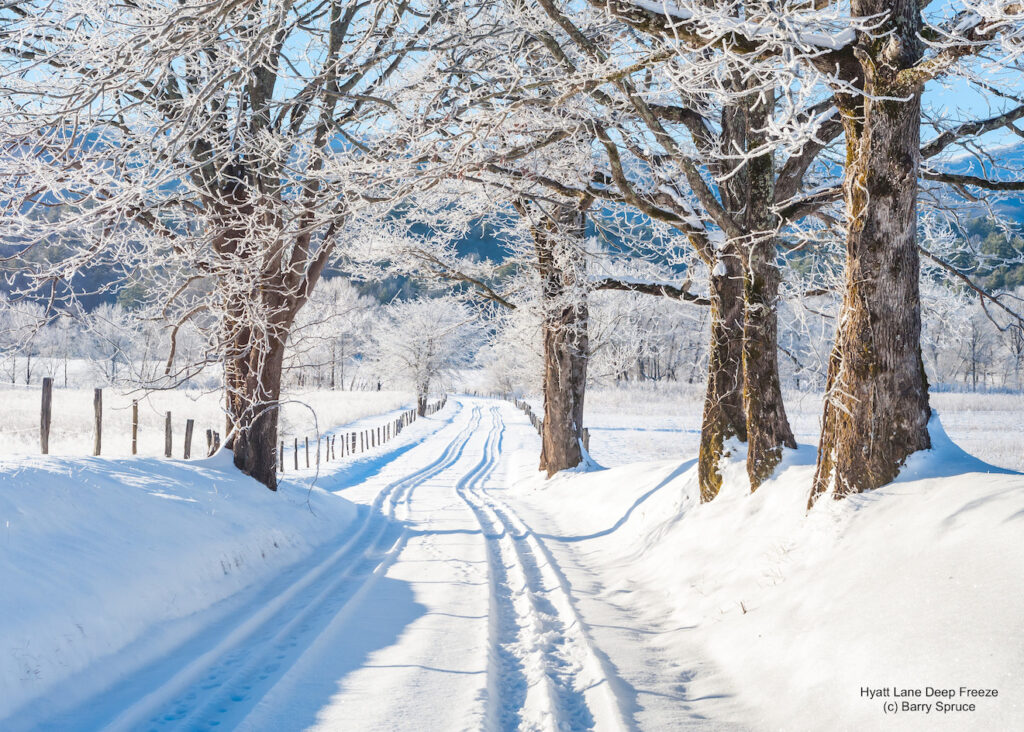
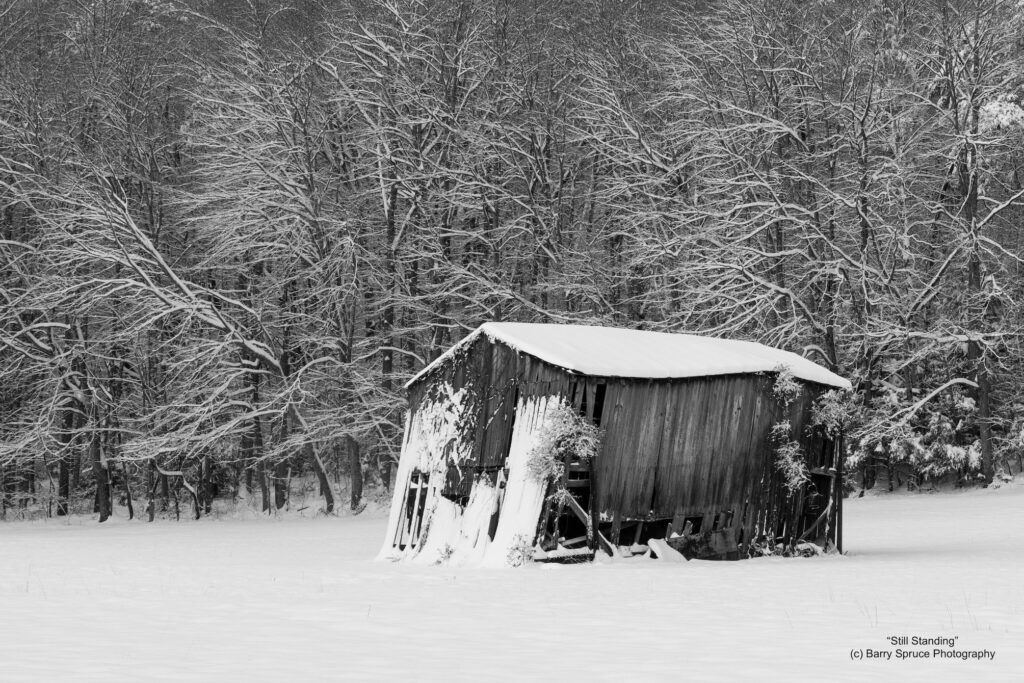
Experiment with these tips to capture great winter landscapes and wildlife. Learning nature and wildlife photography is like learning to play a musical instrument. It takes consistent practice and honing of your skills. So don’t wait for the Spring thaw to get out and enjoy some photography.
